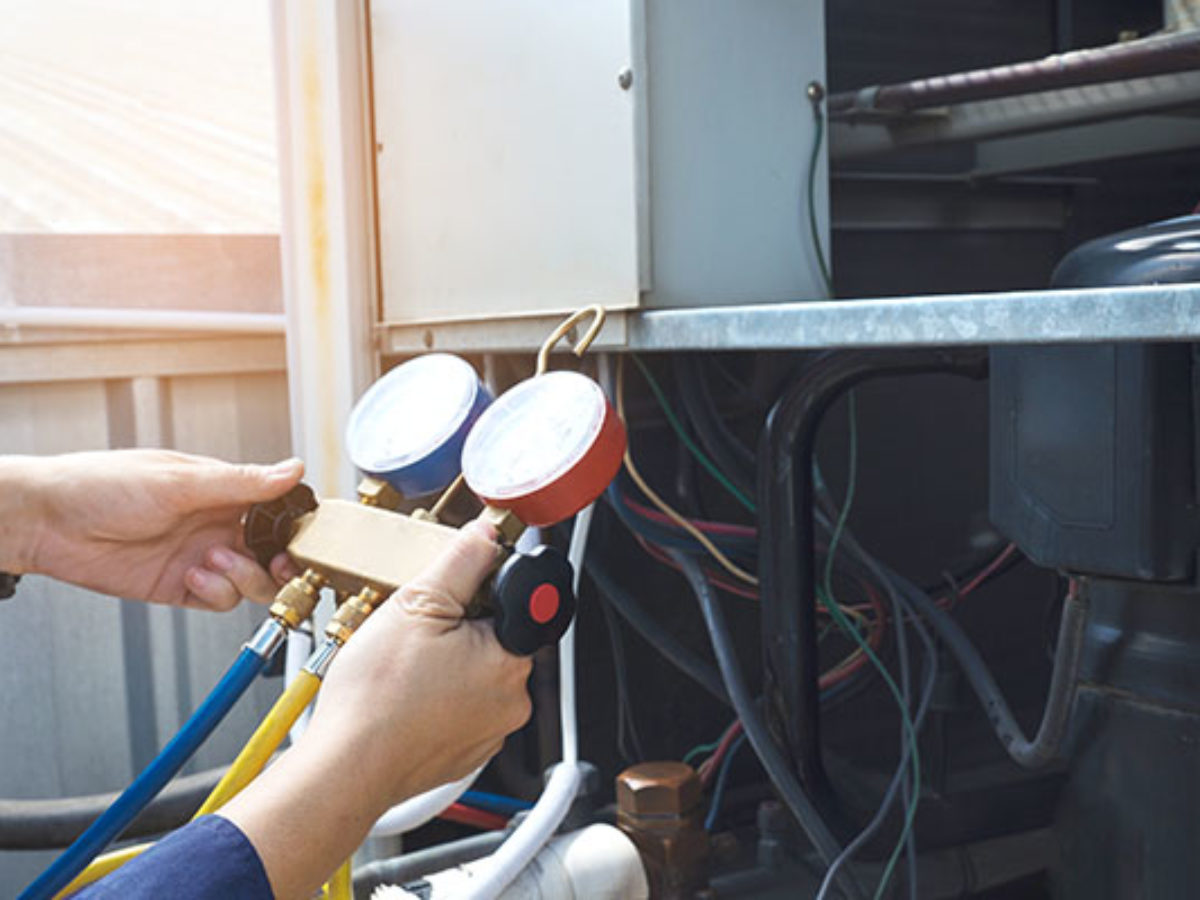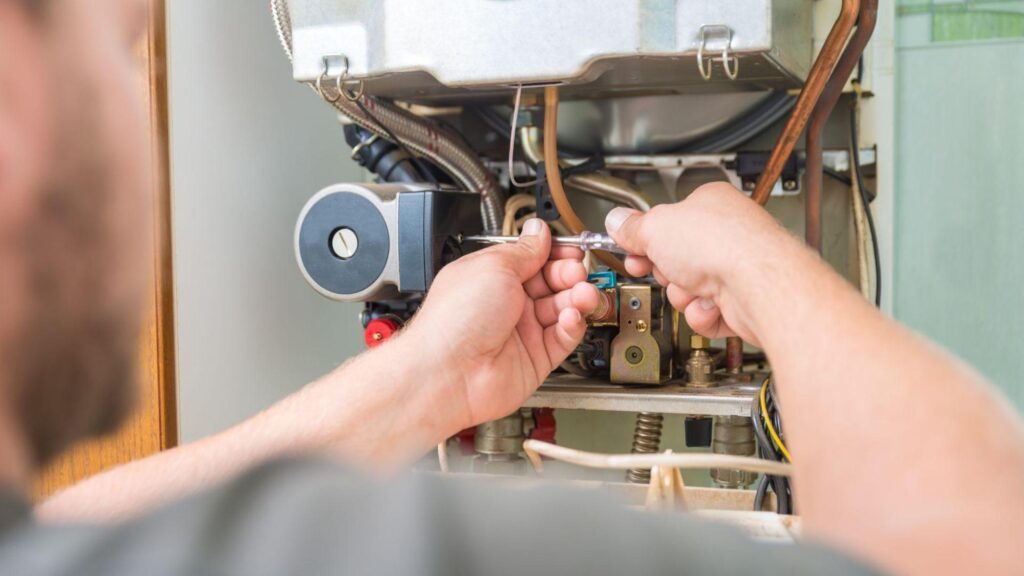When your furnace acts up in cold weather, it’s more than a hassle—it can lead to discomfort, high energy bills, or even damage. This guide breaks down common furnace problems and offers expert tips to help you troubleshoot and know when it’s time for furnace repair or service.
Furnace Leaking Water
A furnace leaking water is usually linked to a high-efficiency (condensing) furnace. These systems produce condensation during the heat exchange process, which is supposed to drain away through a pipe. If that drainage line is clogged, cracked, or improperly sloped, water can collect at the base of your furnace.
What to do: Shut off the furnace and inspect the condensate line. If you notice any visible blockages or kinks, clear them or flush the line with a mix of water and vinegar. If the problem persists, contact an HVAC company to check for a failed condensate pump or internal blockage.
Furnace Not Blowing Hot Air
If your furnace is not blowing hot air, start by checking the thermostat settings. It may sound obvious, but it’s common for the fan setting to be left on “On” instead of “Auto” which means the blower runs even when the furnace isn’t heating.
If the settings are correct, a dirty air filter may be restricting airflow, causing the heat exchanger to overheat and shut off too soon. In more serious cases, it could be a faulty limit switch or ignition system.
What to do: Replace the air filter, reset the furnace, and observe. If there’s no improvement, it’s time for a qualified technician to inspect it. A safe and thorough furnace service can restore heat before bigger problems arise.

Furnace Blowing Cold Air
A furnace blowing cold air might indicate an ignition problem. In gas furnaces, if the pilot light or electronic igniter fails, the system may start up but never produce heat. This can also happen if there’s an issue with the flame sensor, which prevents the burners from staying lit.
Another possibility? The furnace is overheating and shutting down the burners as a safety measure.
What to do: Don’t ignore this. Repeated overheating can crack the heat exchanger—an expensive and dangerous issue. Call for furnace repair to avoid a complete system failure or carbon monoxide hazard.
Furnace Short Cycling
Furnace short cycling—when the furnace turns on and off repeatedly—can wear down components fast and drive up your energy costs. This issue can be caused by a dirty air filter, improper thermostat placement (like near a heat source), or an oversized system that heats the space too quickly.
But it can also be a symptom of a malfunctioning flame sensor or control board error.
What to do: Start by replacing the filter and checking the thermostat location. If the cycling continues, a technician should evaluate whether your furnace is properly sized for your home and inspect the internal components.
Furnace Not Working
If your furnace is not working at all—no fan, no heat, no noise—first check the basics: Is the furnace switch on? Did the circuit breaker trip? Is the thermostat getting power?
If all looks fine, the issue may lie deeper: a failed ignitor, bad blower motor, broken thermostat wiring, or even a tripped safety limit switch inside the furnace.
What to do: Before calling for furnace repair, replace the thermostat batteries, inspect for visible damage, and test power to the unit. If it still doesn’t start, professional help is needed.
When to Call for Furnace Repair or Furnace Service
Some furnace problems are easy fixes, like changing a filter or adjusting the thermostat. But if you notice strange smells, loud noises, or high humidity, it’s time for furnace repair. Acting fast prevents bigger damage and costly breakdowns. To avoid issues altogether, schedule professional furnace service once a year—it keeps your system clean, efficient, and ready for winter.
Final Thoughts
Understanding the most common furnace problems gives homeowners a head start in dealing with winter breakdowns. While basic troubleshooting is helpful, don’t hesitate to call in a pro for reliable furnace repair.






